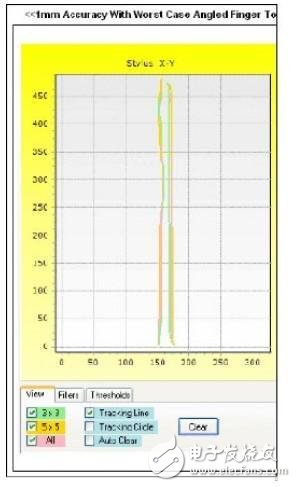The most profound technological change affecting touch screen performance is the transfer from resistive to capacitive touch screen technology. According to market forecaster iSuppli, by 2011, nearly 25% of touch-screen phones will be transferred from resistive to capacitive touch screens. The various benefits brought by capacitive touch screen technology will prompt the market to grow rapidly.
In the conventional resistive touch panel, when the finger or the stylus is sensed, the top flexible transparent material is pressed down to contact the underlying conductive material layer; and the projected capacitive screen has no movable parts. In fact, the projected capacitive sensing hardware consists of a top layer of glass, followed by X and Y axis components, and an indium tin oxide (ITO) insulating layer overlying the glass substrate. Some sensor suppliers will make a single-layer sensor with embedded X and Y-axis sensors and small bridge components in a single layer of ITO. When a finger or other conductive object is close to the screen, it will be generated between the sensor and the finger. A capacitor. This capacitance is quite small compared to the system, but it can be measured using a variety of techniques.
One technique is to use TrueTouch components, including quickly changing the capacitance and using a bleeder to measure the discharge time. This all-glass touch surface gives the user a smooth and smooth feel. End-product manufacturers also prefer glass screens because glass materials give end products a line of aesthetically pleasing industrial design and provide superior capacitive signals for measuring touch. Finally, it is important not only to consider the appearance of the touch panel, but also to understand its mode of operation. In order to design a touch screen product with excellent performance, the following parameters must be noted.
Accuracy: Accuracy can be defined as the maximum positioning error in a predefined touch screen area, in units of the linear distance between the actual position of the finger and the measurement position. When measuring accuracy, an analog or mechanical finger is used. Place your finger in an exact position on the panel and compare the actual position of the finger to the measured position. Accuracy is very important, and the user wants the system to accurately find the finger position. One of the most frustrating drawbacks of resistive touch screens is their low accuracy and the gradual decrease in accuracy over time. The precision of capacitive touch screens creates many new applications, such as virtual keyboards and handwriting recognition without the stylus. Figure 1 shows an incomplete touch panel data showing that the finger position has a wandering phenomenon, but actually the simulated finger is moving in a straight line.

Figure 1: Example shows inaccuracy or error in touch panel tracking
Microsoft Surface Charger have 4 types. For Surface Pro 1/2/3/4.
Surface Pro 1/2: 12V 3.6A
Surface Pro 3: 12V 2.58A
Surface Pro 4: 15V 1.6A
Microsoft charger has different connector with other Laptop Adapter. Its connector is magnetic tip.
Definitely Charge Faster, excellent Power Supply for Microsoft Surface Pro. Just drop it in your bag or even pocket and get going – no need to carry anything else, as power is always within easy reach.
Microsoft Surface Charger
Microsoft Surface Charger,Microsoft Surface RT Charger,Microsoft Surface Tablet Charger,Charger For Microsoft Surface
Shenzhen Waweis Technology Co., Ltd. , https://www.waweis.com